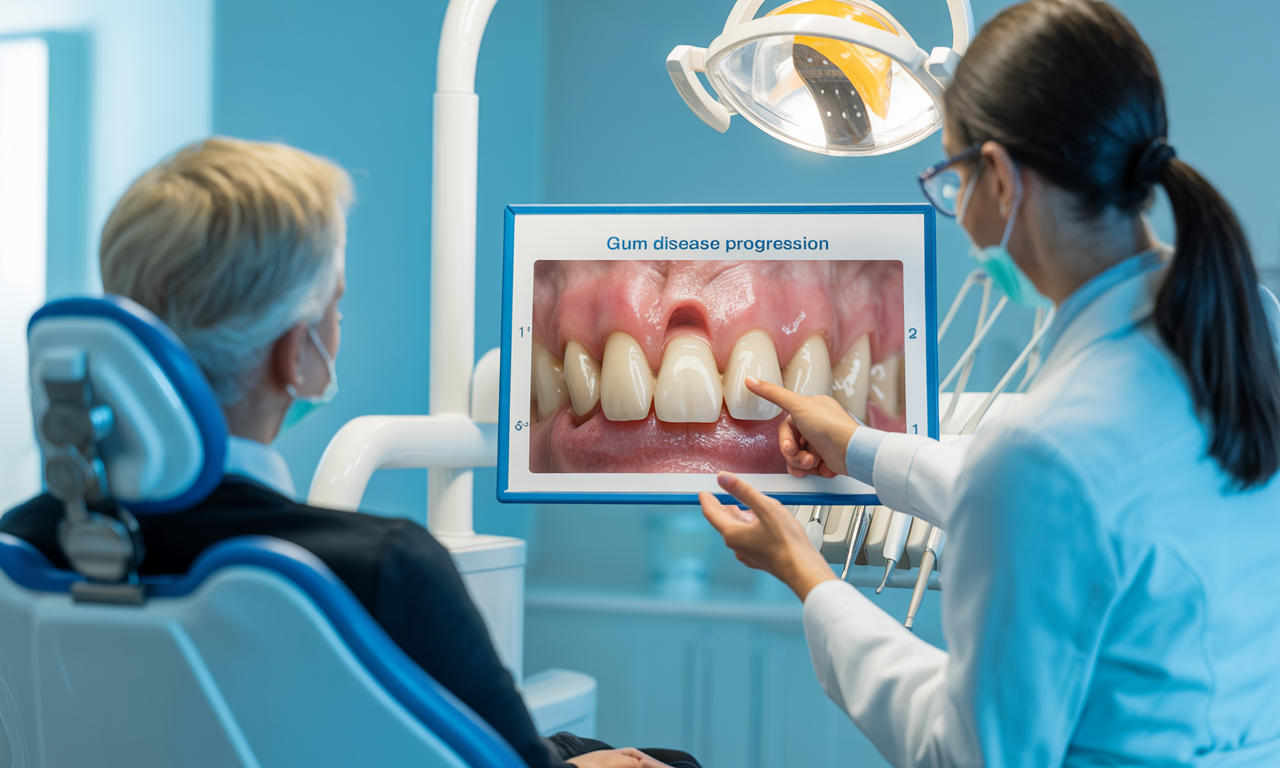
Let’s be honest—nobody dreams of booking a dentist appointment. But when it comes to your gums, procrastination can cost you more than just your smile. Gum disease doesn’t show up overnight, and by the time it’s obvious, you’re often past the point of simple fixes. A gum disease doctor, also known as a periodontist, can spot and stop issues before they balloon into serious health problems—yes, even beyond your mouth.
If you’re brushing regularly and still bleeding, noticing bad breath that won’t quit, or spotting some gum recession, it’s not “normal”—it’s a warning light. Keep reading to learn why a gum disease doctor isn’t just a dental extra—they’re your front-line defender in long-term oral (and overall) health.
TLDR – Quick Guide
- Gum disease starts silently. Red, swollen, or bleeding gums are early signs.
- A gum disease doctor can stop progression before permanent damage sets in.
- Prevention is powerful. Proper hygiene, diet, and routine check-ups matter.
- Gum health links to heart disease, diabetes, and even pregnancy complications.
- Seeing a specialist early saves money, teeth, and long-term health.
Detailed Breakdown
What Does a Gum Disease Doctor Actually Do?
A gum disease doctor—aka a periodontist—specializes in diagnosing, treating, and preventing gum-related diseases. They don’t just clean teeth. They perform deep cleanings (like scaling and root planing), treat inflammation at the root level, and manage surgical procedures like gum grafts or implants if necessary.
Their role is critical when general dentists spot gum issues they can’t tackle alone. Think of them as the “special forces” of oral health.
Why Gum Disease is More Serious Than You Think
According to the CDC, nearly half of adults over 30 have some form of periodontal disease. Left untreated, it leads to:
- Tooth loss
- Bone deterioration
- Chronic bad breath
- Increased risk of heart disease and diabetes
- Complications during pregnancy
This isn’t just about aesthetics—it’s about systemic health. Bacteria from infected gums can enter your bloodstream and trigger inflammatory responses in the body, making chronic conditions worse.
Early Signs You Need to Watch
Don’t wait until you’re in pain. Schedule a visit to a gum disease doctor if you notice:
- Bleeding while brushing or flossing
- Receding gums or longer-looking teeth
- Persistent bad breath or bad taste
- Loose teeth or shifting bite
- Swollen, red, or tender gums
The earlier the intervention, the better the outcome.
Prevention Tips from the Pros
Here’s how to stay ahead of gum disease, according to the American Academy of Periodontology:
- Brush twice a day using fluoride toothpaste
- Floss daily to remove plaque between teeth
- Use an antimicrobial mouthwash
- Quit smoking, which significantly increases gum disease risk
- Visit your dentist or periodontist at least twice a year
A professional cleaning isn’t a luxury—it’s basic upkeep. And if your general dentist refers you to a gum disease doctor, don’t delay it.
When to See a Specialist Instead of Your Regular Dentist
If your gums bleed frequently, you’ve been diagnosed with gingivitis or early periodontitis, or your teeth feel loose—go straight to a periodontist. They’re trained in advanced treatment techniques that can halt or even reverse the damage when caught early.
Key Takeaways
- Gum disease is more common—and more dangerous—than most people realize.
- A gum disease doctor (periodontist) can provide specialized care that general dentists may not.
- Early warning signs include bleeding, swelling, and gum recession.
- Prevention starts at home but must be paired with professional check-ups.
- Addressing gum issues early helps avoid costly procedures and health complications down the road.
FAQs
What is the difference between a dentist and a gum disease doctor?
A general dentist focuses on overall oral care—cleanings, fillings, crowns—while a gum disease doctor (periodontist) specializes in diagnosing and treating gum disease. If your gum issues go beyond mild gingivitis, a periodontist is your go-to expert.
Is gum disease reversible?
Early stages like gingivitis are reversible with improved oral hygiene and professional care. However, once it progresses to periodontitis, it can only be managed—not reversed—making early detection key.
Can gum disease affect my overall health?
Yes. Research shows strong links between periodontal disease and systemic conditions like heart disease, diabetes, and pregnancy complications. Taking care of your gums is taking care of your whole body.
How much does it cost to see a gum disease doctor?
Costs vary based on location and treatment needed. A deep cleaning can range from $150–$300 per quadrant. Insurance may cover part of it, especially if your dentist refers you.
How often should I see a gum disease doctor?
If you’re at risk or already diagnosed, you might need visits every 3–4 months. For most patients, seeing a specialist once or twice a year alongside regular dental checkups is ideal.
